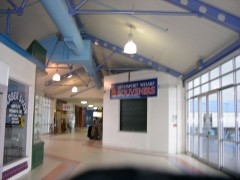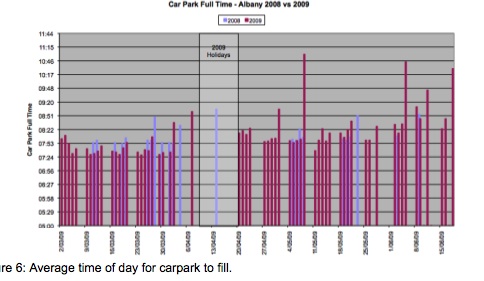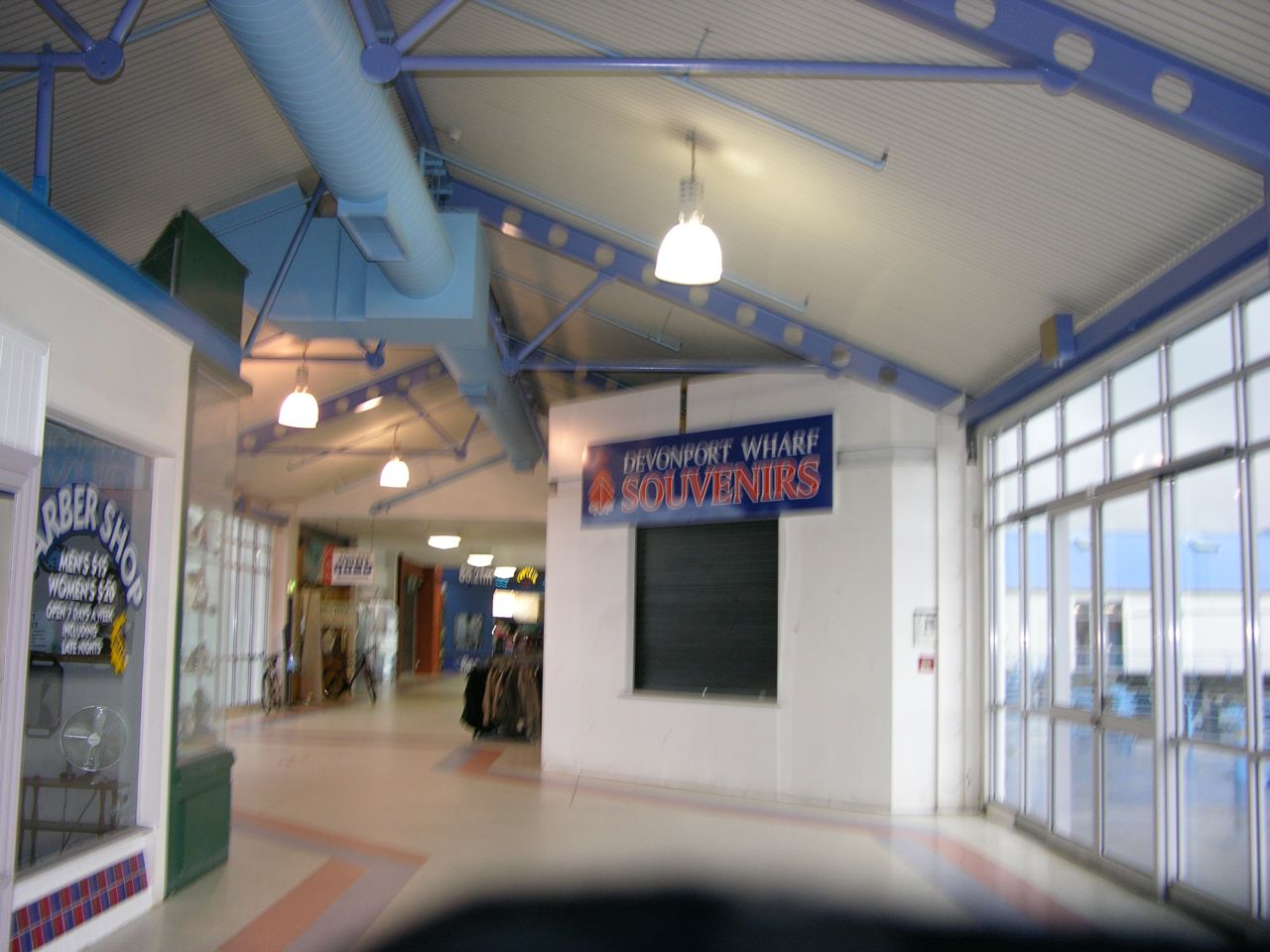Nth Shore Car Pool Trial
Preferential parking for about 68 high occupancy vehicles (HOVs) with two or more people will be introduced at the Albany Park ‘n Ride busway station and 28 HOV carpool parks at the Devonport wharf for weekday commuters.
The scheme was approved at today’s North Shore council infrastructure & environment Committee as a one year trial from October 1, with a review after six months. Today’s meeting gave some interesting insights into the present use of the busway park and rides.
Mayor Andrew Williams called it introducing smarter, more innovative transport options to encourage more people to use buses and ferries.
“If they come with two or more people in their cars they will have the opportunity to park in the carpool parks located close to the bus station and ferry terminal. If the scheme is successful we will look at rolling it out to other Park ‘n Rides and ferry terminals, and I anticipate it will also be adopted across the region.”
A report to the committee said most overseas references to HOVs put them in the context where they were seen as a means of undertaking the whole journey as an alterative to or substitute for a bus or single occupant car trip and not encouraging HOVs as a means of travelling to a park and ride facility. Most trials in the US require drivers to register either their vehicles or themselves and their passengers, and to display passes on their vehicles when parked in the preferential spaces.
In Devonport, there aren’t enough car spaces near the ferry and some seem to be being taken by people who work in the village.
Surveys in Devonport were encouraging with a high proportion of travellers saying they would consider participation in an HOV scheme. It’s concluded the present low HOV use at stations reflects the response to a lack of incentives, which a HOV preferential parking trial will seek to address for travellers using these stations/terminals.
The council report discusses whether to use HOV2s or HOV3s as a basis for the trial.
While HOV3s were considered attractive from a policy perspective, it was concluded that targeting HOV2s would make a bigger impact. This choice was because there is a bigger pool of existing drivers (over 500 in the case of Albany) who might find a passenger or choose to ride with a friend or family member. With HOV3, a smaller number of existing HOV2 users need to find another person, or solo drivers need to find two others. Thus HOV2 has greater potential to reduce parking demand at the park and ride sites.
At Albany it’s proposed to eventually use 86 preferential spaces or 15% of the total carpark with from day one accommodating the 30 existing HOVs with space for another 10 – 40 spaces in total. At Devonport, day one would involve the 14 existing HOVs with space for another 6 spaces in total.
By the way: there was no discussion today at the committee meeting re cars using the Northern Busway lanes when the Victoria Park tunnel opens. This means it will be in the hands of the new Auckland Transport body.















6 Comments
This is actually a really clevel way to maximise these carparks and if Onewa Rd is anything to go by could turn out to be a pretty successful way of getting people to car pool.
Nice to see some intelligent thinking about transport.
How is it going to be enforced? Once parked, there’s really no way of checking anymore, so I’d think they would need to have someone out there on odd mornings to check while the cars arrive. Otherwise people will just grab them in single-occupancy cars.
@Karl The council says on enforcement:
Users of the preferential parking area will be ‘regulars’ to the site in the same way as most users of the sites are frequent travellers on the public transport services offered. Thus education and enforcement can take place at a fairly measured pace, rather than having to be reliably applied to every vehicle arrival every day.
To achieve 100% compliance it would be necessary to have the preferential parking area under direct observation by a warranted officer over the entire scheme period; however as is the case with car parking and speed camera enforcement, a useful and sufficient level of enforcement can be achieved by a combination of low frequency enforcement by warranted officers and in this trial scheme complimented by higher frequency educational observation by existing bus station or other unwarranted staff.
This ‘educational observation’ could simply entail handout or placement on vehicles of ‘friendly warning’ notices to offenders. The recording of registration numbers of offenders would support the warranted officer’s enforcement efforts.
The ‘friendly warning’ notices would compliment other marketing and promotional programmes.
There is no normal staff presence at the Devonport Terminal, and thus the ‘educational observation’ work would require additional staff resources compared with Albany where staff already monitors the car park performance either on site, or through the CCTV system.
Staff requirements then are represented by the additional workload on existing staff at Albany plus a new staff requirement at Devonport. Enforcement can be on a similar schedule as that currently applied at both centres, with the requirement that the detection of an offence requires the officer to be on the site at the moment the car is parked. Thus effective enforcement may entail attendance on the site for a period of at least 30 minutes during which time 4 to 6 complying vehicles would arrive – based on present HOV2 arrival rates. There may also be scope to install CCTV at Devonport that would assist with enforcement of this preferential parking scheme.
At least they thought of it. Non-enforcement would quickly become public amongst the regulars, and the spaces taken up by others, so it’s rather crucial.
And I don’t support “warnings” (in lieu of infringement notices) except for the initial weeks after installation. Councils should support their own rules with confidence.
I live in Kaukapakapa, and catch a bus into the city at the closest point I can to home. I work unpredictable hours, and live in an area with under 1000 people in it, making sharing a car near impossible.
Instead of putting people off using the Park n Ride, why not build some decent parking facilities and get on with putting proper Park n Ride facilities into Silverdale (and extending enough services up to there to make it practical)?